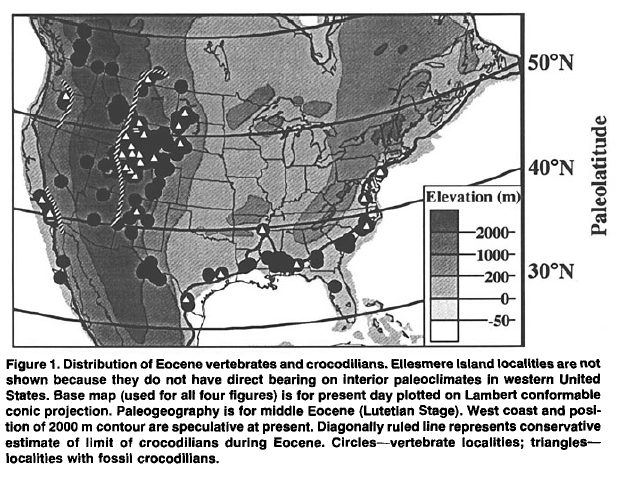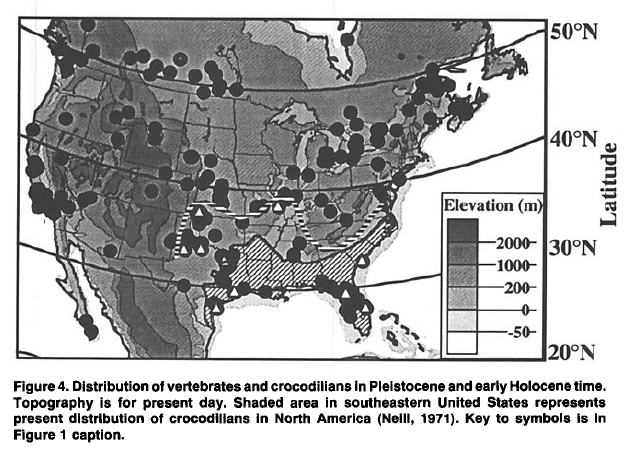Following the process described as nearest living relative analysis, a scientist can use an animal fossil to obtain estimates for the climate. Scientists often use crocodilian fossils to investigate the past climate because crocodilians can live in only a limited range of temperatures. The areas that they can inhabit are limited because crocodilians are eco-therms, so their body temperatures depend upon the energy that they absorb from the environment (Markwick, 1994).
Scientists regularly choose the American Alligator as the representative species to obtain the "climatic tolerances of all living crocodilians" (Ibid.). This species can live within the range of 4°C and 39°C, but it typically inhabits regions with temperatures between 25°C and 35°C. Therefore, it tends to inhabit tropical or subtropical areas. However, scientists have discovered crocodilian fossils in North America up to latitudes of about 50°N. As a result, they have estimated that mean annual temperatures in interior North America must have been greater than 16°C, that cold month mean temperatures were greater than 7°C, and that mean annual temperature ranges were less than 21.1°C (ibid.). The crocodilian fossils, therefore, paint a very different picture of the past climate than the current one and reveal that equable climates existed during the Cretaceous and the Eocene.


Crocodilian Fossil Distribution in the Eocene (left) and in the Pleistocene and early Holocene (right) (Both from Markwick, 1994)
